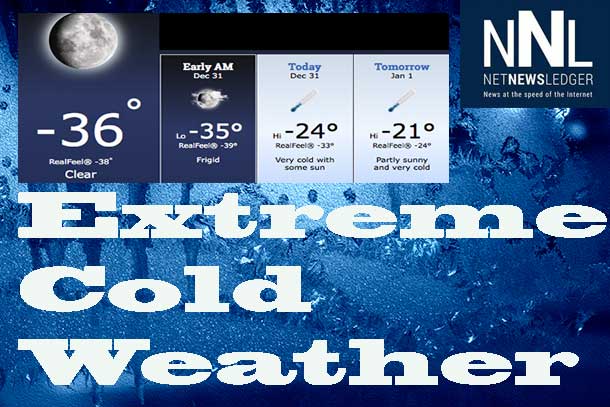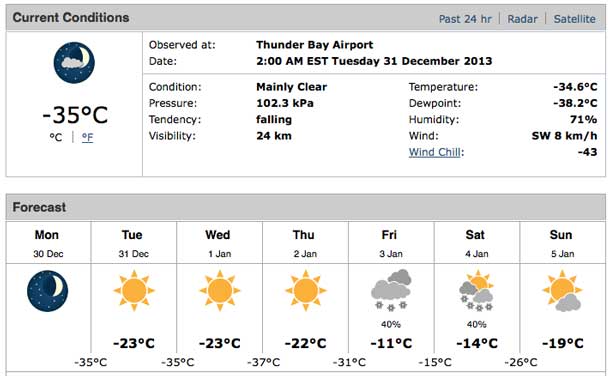
Wind Chill Freezing Thunder Bay and Region
THUNDER BAY – News – Northern Ontario will experience bitterly cold temperatures over the next several days as a strong ridge of high pressure currently over Saskatchewan moves east reaching Ontario by Wednesday. The extreme cold Arctic air will bring overnight lows of minus 35 to minus 40 degrees Celsius with daytime highs of minus 25 to minus 30 degrees Celsius. The frigid temperatures are expected to persist through Thursday.
For areas in the Far North, the deep freeze has temperatures with wind chill hitting the -50c or colder thermal decline.
Environment Canada has issues weather advisories for almost all of the Far North in Ontario, and Special Weather Statements for Kenora, Dryden, Thunder Bay, Fort Frances, Atikokan, Nipigon, and Red Lake.

Thunder Bay District Health Unit Worried About Impact of Cold
When windchill is -40°C or colder, skin can freeze in as little as 5 minutes so it’s important to check unprotected skin often for signs of frostbite,” says Judi Marton, public health nurse.
“Wrap a scarf around your neck and over your mouth so you can have warm air to breath. Limit your time outdoors, and keep active. And don’t forget about pets. Dogs and cats can also get hypothermia and frostbite.”
Those most susceptible to the cold are young children, individuals 65 years of age and older, the homeless, outdoor workers, sport enthusiasts, people living in poorly insulated homes or without heat, or power. Check frequently on elderly people you know, including your neighbours.
Frostbite is the freezing of skin and can cause permanent damage. Signs include:
- Pink – affected areas will first appear reddish
- Pain – affected areas will become painful
- Patches – white/grey, waxy feeling patches show up; skin is dying
- Pricklies – the areas will then feel numb
Areas of the body most affected by frostbite are the ears, nose, cheeks, chin, fingers and toes. If you suspect frostbite seek medical attention. So-called cures like rubbing the area with snow don’t work.
Hypothermia Can Kill
Hypothermia occurs from over-exposure to the cold. It is caused by the body losing heat faster than your body can create it. Hypothermia is dangerous because a low body temperature can affect the brain. Signs of hypothermia include:
• A person who mumbles
• A person who stumbles
• A person who fumbles objects
If you see any of these symptoms, get medical attention right away.
It is advised to stay indoors or cover any exposed skin as much as possible when venturing outdoors.







